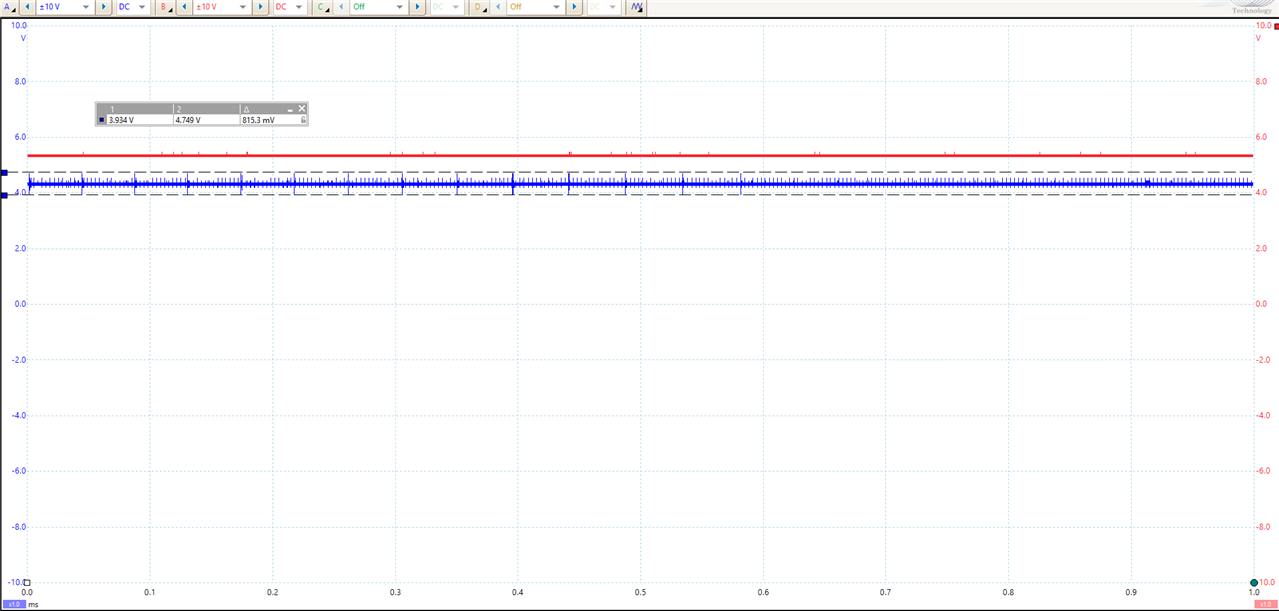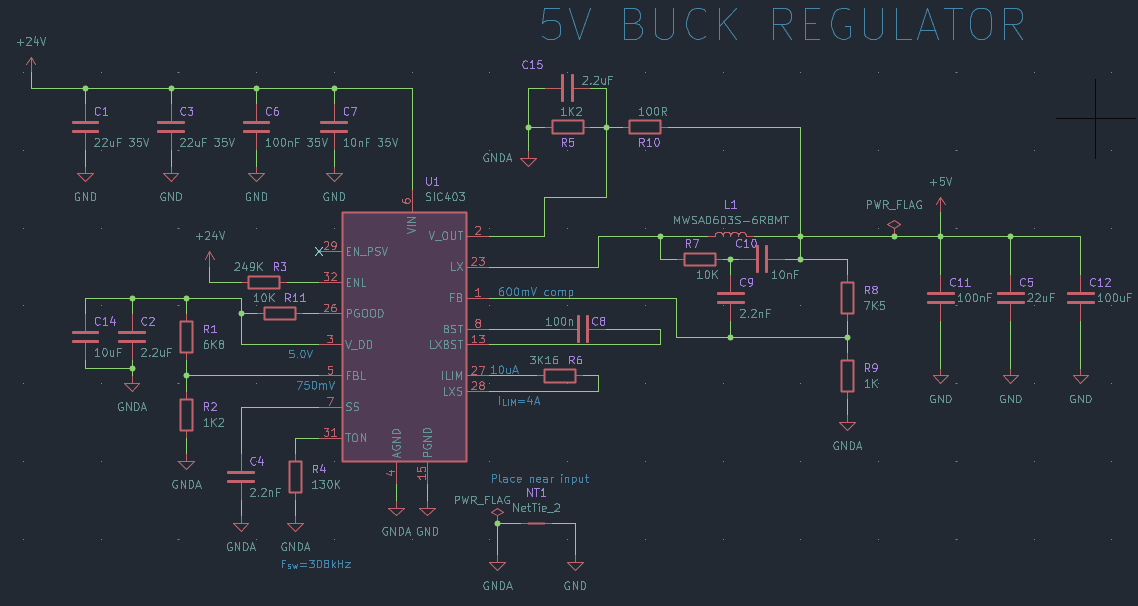Hello,
I'm currently designing a very compact board that should take a 24V power source and regulate it down to 5V (up to 4A) to power RGB led strips. The board has some specific mechanical constraints because it would need to slide inside aluminum profiles and solder directly over the strip.
I ran simulations on Vishay transim's website and for 5V 4A the chip should not go over 40C, but when I tested my board I saw the LDO is consuming around 1W and is overheating the chip until a point where it either goes to overtemperature protection or the chip just dies. I got another board consuming up to 150mA when ran at 15V.
Is there something wrong with my schematic? I thank maybe as I'm using it to output 5V I should put a resistor divider to V_out but it changed nothing. I checked my schematic against their datasheet, the eval board and the transim example but none of them are similar to each other so I don't know which one is the working one.
I already tried shutting down the regulator output to keep the LDO and the consumption is the same, which is why I think this is the LDO. I also checked the 5V output and the output seems nice but the power good pin is always at low state (I patched a pull-up resistor between pgood and vdd to check that).
Do you have ideas of things I could do to diagnose this issue?
Thanks,




